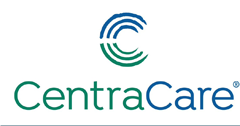Document Type
Article
Publication Date
3-2018
Abstract
Abstract: Treatment options may be limited for infants with obstructive sleep apnea when there is no surgically correctable upper airway lesion. We therefore evaluated, retrospectively, the efficacy of low-flow oxygen as a therapeutic option for infant obstructive sleep apnea. We reviewed the medical charts of 23 infants who had undergone a therapeutic trial of low-flow oxygen during polysomnography. Split-night polysomnography was used in 21/23 subjects while 2/23 had undergone two separate, full-night polysomnography sleep architecture and respiratory findings on the baseline polysomnogram segment that was obtained in room air were compared with the segment on low-flow oxygen (0.25–1 L/min). Wilcoxon signed rank or McNemar’s test were used as indicated for comparing apnea hypopnea index and measures of sleep architecture at baseline and with oxygen therapy. The mean (plus/minus SD) age of subjects was 4.8 (plus/minus 2.7) months, with 52% being males. The median apnea hypopnea index fell from a baseline of 18 (range 7–43) to 3 (range 1–19; p = 0.001) on oxygen. The baseline median obstructive/mixed apnea index decreased from 2 (range 1–16) to 1 during oxygen therapy (range 0–1; p = 0.003). Additionally, a significant decrease in central apnea index (median interquartile range (IQR) 1 (0–2) vs. 0 (0–1), p = 0.002) was noted. Sleep efficiency remained unaffected, while O2 saturation (SaO2) average and SaO2 nadir improved on oxygen. We were able to confirm the utility of low-flow oxygen in reducing central, obstructive, and mixed apneas and improving average oxygen saturation in infants with obstructive sleep apnea (OSA).
Recommended Citation
Das, Piyush; Kashyap, R; and Kotagal, S, "Impact of Supplemental Oxygen on Obstructive Sleep Apnea of Infants" (2018). Articles. 63.
https://digitalcommons.centracare.com/articles/63

